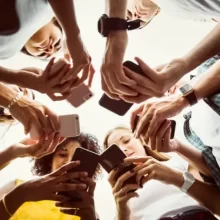Kevin Sorbo Under Fire After Claiming Hollywood Men Aren’t ‘Manly’ Anymore
The post Kevin Sorbo Under Fire After Claiming Hollywood Men Aren’t ‘Manly’ Anymore appeared first on Healthy Holistic Living.
In recent years, the conversation around masculinity and its representation in Hollywood has taken center stage, sparking debates and opinions from all corners. One notable voice in this discussion is Kevin Sorbo, whose comments on the perceived lack of “manliness” in Hollywood men have ignited a firestorm of reactions. Sorbo, at 65, best known for his role in “Hercules: The Legendary Journeys,” lamented in an op-ed for Fox News about what he sees as an “anti-men” campaign in the American film industry over the last two decades. Through his critique, Sorbo touches upon a sensitive nerve in contemporary society: the evolving definition of masculinity and its portrayal in media.
This article aims not to fan the flames of controversy but to explore the multifaceted nature of masculinity today. It seeks to understand the changing dynamics in Hollywood’s depiction of men and to offer a more nuanced perspective on what it means to be “manly.” In doing so, it will delve into the importance of diverse representations, the role of modern heroes, and how society can benefit from a broader understanding of masculinity that transcends traditional stereotypes. By examining these themes, we aim to keep the reader’s curiosity alive, fostering a thoughtful and engaging discussion on the essence of manhood in our current era.
The Evolution of Masculinity in Hollywood
The portrayal of masculinity in Hollywood has significantly evolved, mirroring shifts in societal attitudes towards gender roles. Traditional depictions of the male hero, characterized by physical strength and stoic resilience, have made room for more complex and emotionally nuanced portrayals. This change reflects a growing desire among audiences for characters that exhibit depth, vulnerability, and a broader spectrum of human experience, challenging outdated notions of what it means to be “manly.”
Critics like Kevin Sorbo view this trend as an erosion of traditional masculinity, interpreting the diversification of male roles as a move towards androgyny or a diminishing of masculine virtues. However, this perspective overlooks the value of representing a wider array of masculine experiences. By showcasing men who embody traits such as empathy, nurturing, and emotional intelligence, Hollywood is not undermining masculinity but expanding its definition. This inclusivity offers viewers a more realistic portrayal of manhood, emphasizing that strength and vulnerability are not mutually exclusive.
This shift in narrative and character development does more than just reflect societal changes; it actively participates in the cultural conversation about gender. By presenting a variety of male characters, the entertainment industry contributes to a more nuanced understanding of masculinity. This evolution encourages viewers to recognize and appreciate the complexity of male identity, fostering acceptance of diverse expressions of strength and character. Through these expanded portrayals, Hollywood plays a pivotal role in shaping and reflecting the evolving landscape of masculinity in contemporary society.
Redefining Heroes: The Role of Modern Media
In the heart of this transformation lies the redefinition of what it means to be a hero. The modern media landscape has played a pivotal role in reshaping our collective understanding of heroism, moving beyond the physical to the moral and emotional dimensions of strength. This shift recognizes that true heroism encompasses a range of qualities, including compassion, empathy, resilience, and the courage to embrace one’s vulnerabilities. The introduction of characters who defy traditional gender norms has broadened the scope of role models available to audiences, especially younger viewers.
Heroes in today’s stories are as likely to save the day with their intellect, emotional intelligence, or moral conviction as they are with physical strength. This inclusive approach to storytelling not only enriches the narrative landscape but also reinforces the idea that heroism is accessible to everyone, regardless of their physical prowess or traditional masculine attributes. This evolution is particularly evident in the superhero genre, which has long been a bastion of traditional masculinity. Recent years have seen a marked increase in characters who break the mold, offering a more diverse array of heroes who reflect the complexities of real-life masculinity.
These characters often grapple with personal challenges, mental health issues, and moral dilemmas, showing that strength lies not in infallibility but in the ability to overcome adversity and grow. By presenting a wider variety of male heroes, the media sends a powerful message that heroism is defined not by conforming to traditional stereotypes but by one’s actions and character. Through these nuanced portrayals, modern media encourages a more expansive view of masculinity, where being a hero means being true to oneself and standing up for what’s right. This redefinition of heroism not only makes for more engaging and relatable storytelling but also plays a crucial role in challenging and changing societal perceptions of masculinity for the better.
The Impact of Stereotypes on Society
The portrayal of masculinity in media does more than entertain; it shapes societal perceptions and influences individual identity. Stereotypes, particularly those surrounding masculinity, can have a profound impact on how men perceive themselves and how they are perceived by others. The traditional archetype of the stoic, unemotional man, capable of handling any situation with physical strength and indifference to pain, has long dominated the cultural narrative. However, this narrow view of masculinity can limit men’s emotional expression and hinder their ability to form healthy, authentic relationships.
Stereotypes can lead to unrealistic expectations, placing pressure on men to conform to an idealized version of manhood that is often unattainable and disconnected from their genuine selves. This pressure can contribute to a range of issues, including mental health struggles, as men may feel inadequate or fail to seek help for fear of appearing weak. By perpetuating the idea that vulnerability and emotional openness are signs of weakness, these stereotypes reinforce a culture where emotional suppression is normalized, hindering men’s emotional well-being and personal growth.
Addressing and dismantling these stereotypes requires a concerted effort from media creators and consumers alike. By embracing and promoting a more inclusive portrayal of masculinity, media can play a critical role in challenging harmful stereotypes. This includes showcasing men who express a full range of emotions, who engage in nurturing roles, and who are not defined solely by their physical strength or stoicism. Such representations can help normalize the idea that masculinity encompasses a wide range of experiences and expressions, contributing to a more accepting and supportive culture.
Embracing Diversity in Masculine Roles
The push for diversity in media representation has significantly influenced the portrayal of masculine roles, offering a broader spectrum of male identities and experiences. This shift toward inclusivity recognizes that masculinity cannot be confined to a single archetype; it is varied, nuanced, and intersects with race, sexuality, and culture in complex ways. By showcasing a wide range of masculine experiences, media can challenge traditional norms and provide a more accurate reflection of the world’s diversity.
Incorporating diverse masculine roles goes beyond simply adding variety; it serves to dismantle the monolithic view of manhood that has dominated for so long. Characters that defy conventional gender norms — be it through their emotional depth, non-traditional interests, or the rejection of hypermasculinity — offer viewers alternative models of manhood that are equally valid and worthy of respect. This diversity not only enriches storytelling but also validates the experiences of countless men who find themselves outside the traditional mold, promoting acceptance and understanding.
The impact of this diversification is profound, particularly for younger audiences who are in the process of forming their identities. Seeing themselves reflected in a range of positive, multifaceted characters can bolster self-esteem and encourage a more open-minded approach to masculinity. It challenges the notion that there is only one way to be a man, opening up possibilities for individuals to explore and embrace their unique identities without fear of judgment. Through these diverse representations, media can play a pivotal role in shaping a more inclusive society, where everyone is free to express their masculinity in a way that is true to them.
The Role of Media in Challenging Toxic Masculinity
The concept of toxic masculinity, which refers to cultural norms that equate masculinity with control, aggression, and emotional repression, has gained significant attention in recent years. The media plays a crucial role in both perpetuating and challenging these harmful stereotypes. By critically examining and offering alternatives to toxic masculinity, media can contribute to healthier societal norms around manhood and interpersonal relationships.
Films, television shows, and other forms of media that challenge toxic masculinity do so by presenting male characters who embrace vulnerability, express their emotions freely, and engage in supportive, egalitarian relationships. These portrayals offer a powerful counter-narrative to the idea that to be masculine, one must eschew empathy and maintain dominance at all costs. By highlighting the strength in vulnerability and the courage it takes to break free from traditional molds, the media can inspire a reevaluation of what it means to be a strong man.
Moreover, addressing toxic masculinity in media encourages dialogue about the pressures men face to conform to harmful stereotypes. It opens up a space for conversations about mental health, emotional well-being, and the importance of dismantling societal expectations that limit individual expression. As more creators and consumers recognize the value of these discussions, media can serve as a catalyst for change, promoting a version of masculinity that is inclusive, healthy, and liberating for all.
Nurturing Positive Male Role Models
In the journey toward redefining masculinity, the cultivation of positive male role models in media is indispensable. These role models demonstrate that strength comes in many forms, including compassion, empathy, and the ability to listen and communicate effectively. By highlighting characters and real-life figures who embody these qualities, the media can inspire a new generation to embrace a more inclusive and emotionally intelligent version of masculinity.
Positive male role models in media challenge the traditional narrative by showing that men can be powerful agents of change without resorting to aggression or dominance. They lead by example, showing that true leadership involves collaboration, understanding, and respect for others’ perspectives. Whether it’s through the depiction of dedicated fathers, insightful mentors, or characters who stand up for justice and equality, these role models provide a blueprint for ethical and compassionate manhood.
These portrayals not only broaden the scope of what it means to be masculine but also encourage viewers to reflect on their own values and behaviors. By identifying with these positive figures, individuals can aspire to a form of masculinity that prioritizes personal integrity and the well-being of others. As the media continues to evolve, its role in shaping perceptions of masculinity remains crucial. By promoting positive male role models, it can foster a culture that values emotional depth, moral courage, and genuine connection, paving the way for a more empathetic and inclusive society.
Cultivating a New Masculinity: Practical Tips for Change
As we reflect on the evolving landscape of masculinity and its portrayal in the media, it’s clear that change is not only possible but necessary. To foster a more inclusive and healthy vision of masculinity, here are some practical tips for individuals and communities:
Encourage Emotional Literacy:
Teach young boys and men to recognize and express their emotions in healthy ways.
Promote the idea that vulnerability is a form of strength, not weakness.
Challenge Stereotypes:
Question traditional gender norms and encourage others to do the same.
Support media that showcases diverse and nuanced portrayals of men.
Support Positive Role Models:
Highlight and celebrate male figures in the public sphere who embody positive qualities like empathy, kindness, and emotional intelligence.
Mentor young men and boys in your community, offering them a broader perspective on masculinity.
Promote Healthy Relationships:
Encourage open and honest communication in all relationships.
Model respect and equality in interpersonal interactions.
Engage in Self-Reflection:
Consider your own beliefs and behaviors related to masculinity and how they might be influenced by societal norms.
Be open to learning and growing, recognizing that change starts with the individual.
By adopting these practices, we can each contribute to a culture that celebrates a more inclusive, compassionate, and holistic vision of masculinity. It’s through these small but significant actions that society can shift towards embracing a new masculinity, one that allows all individuals to thrive without the constraints of outdated stereotypes.
The post Kevin Sorbo Under Fire After Claiming Hollywood Men Aren’t ‘Manly’ Anymore appeared first on Healthy Holistic Living.
Related posts:
 James Bond Producer Confirms Bond Will Always Be Played by British Men
James Bond Producer Confirms Bond Will Always Be Played by British Men
 Emily Ratajkowski Asks Comedian to Stop Mimicking Her Photos
Emily Ratajkowski Asks Comedian to Stop Mimicking Her Photos
 Father Raises a Child with Down Syndrome After Mom Considers Foster Care
Father Raises a Child with Down Syndrome After Mom Considers Foster Care
 The Ultra-Rich May Actually Be Less Intelligent Than Lower-Paid People, Study Finds
The Ultra-Rich May Actually Be Less Intelligent Than Lower-Paid People, Study Finds
 Madonna: Redefining Rock ‘n’ Roll with Iconic Style and Unwavering Spirit
Madonna: Redefining Rock ‘n’ Roll with Iconic Style and Unwavering Spirit
Powered by YARPP.







